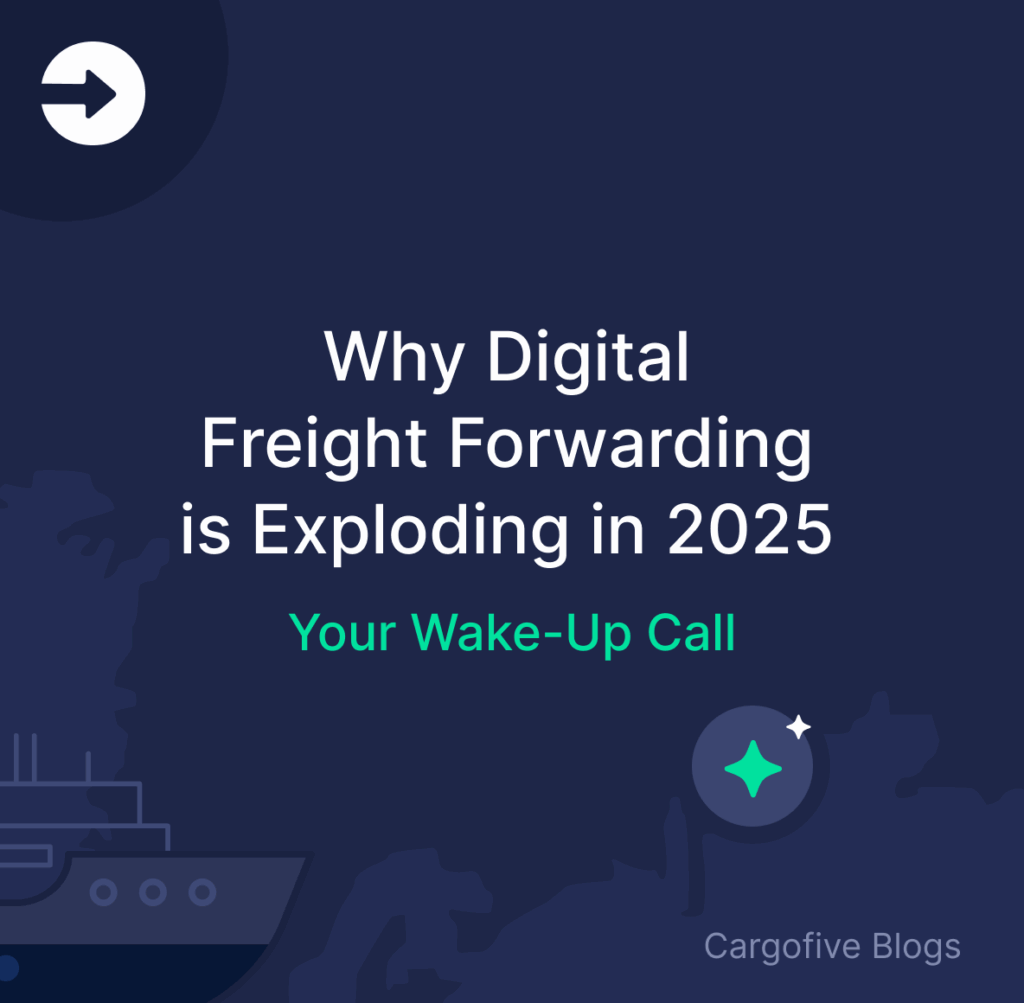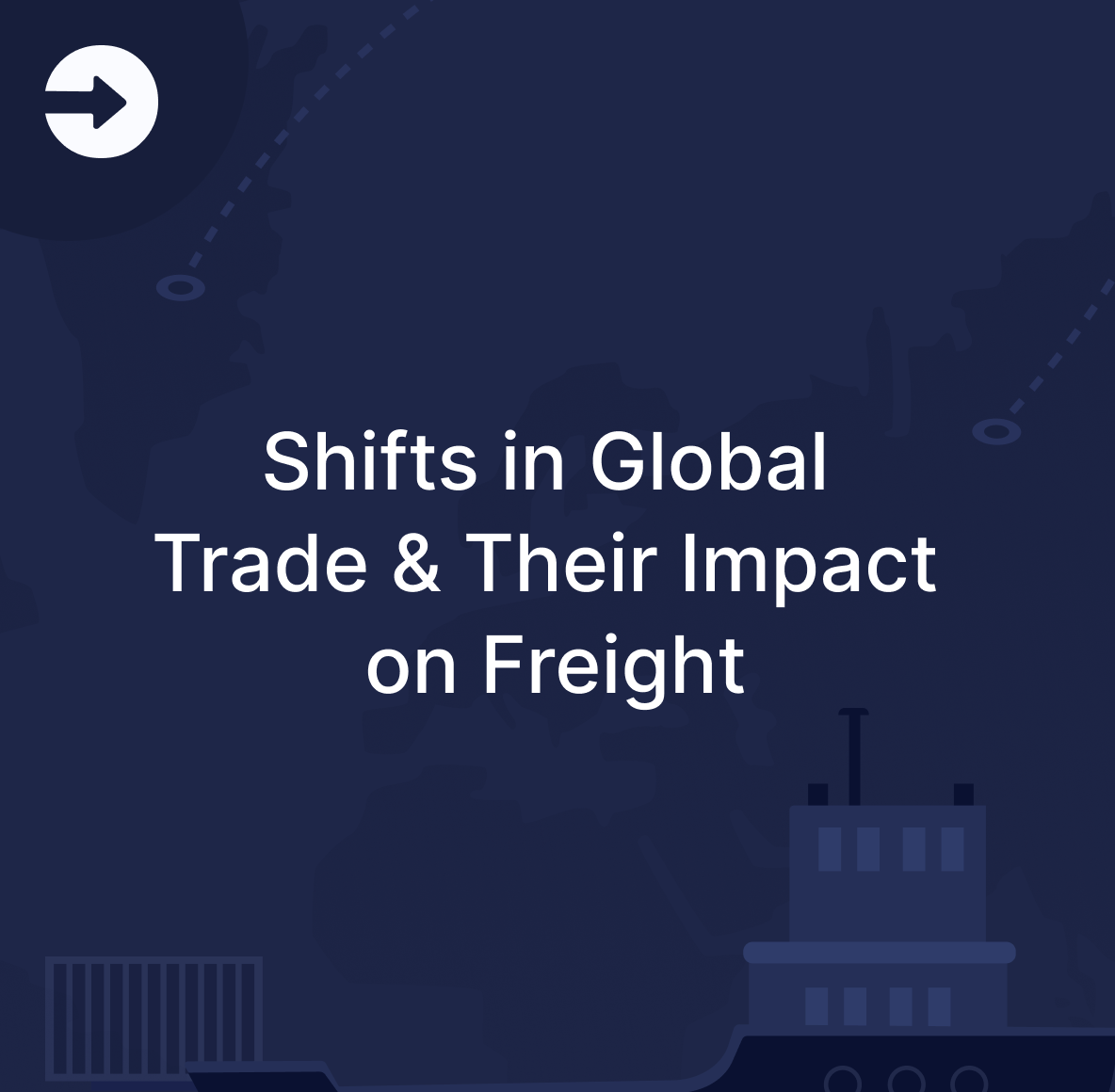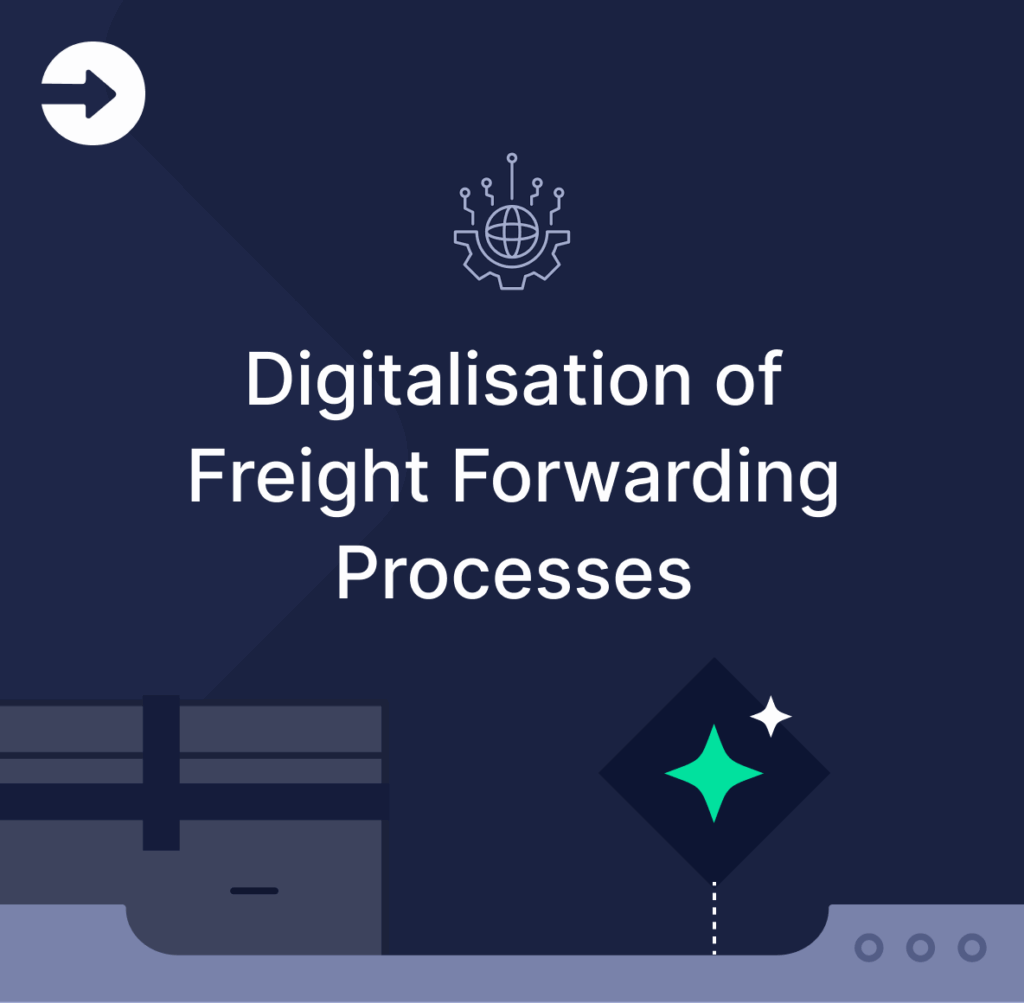Let me ask you something: how many times today did you manually enter the same shipment information into different systems? How many emails did you send just to get a simple tracking update? And how many customers asked you “Where’s my shipment?” when you were scrambling to find the answer yourself?
If this sounds painfully familiar, you’re not alone. But here’s the good news: the most successful freight forwarders have found a way to eliminate these headaches, close more deals, and keep customers happy all without hiring more staff or working longer hours.
The secret? API integration. And no, you don’t need to be a tech expert to understand or benefit from it.
What is API Integration?
Think of It Like Plugging Into a Power Grid
Forget the technical jargon for a moment. Imagine you’re running your office, and instead of having separate power sources for your computer, phone, printer, and lights, you just plug everything into one power grid. Everything works together, automatically.
That’s essentially what API integration does for your freight forwarding business. Instead of manually copying information between your booking system, your carrier portals, your accounting software, and your customer notifications, everything connects automatically.
When you book a shipment, your carriers get notified instantly. When the container moves, your customer sees the update in real-time. When customs clears the cargo, your billing system knows immediately. No copying, no pasting, no phone calls, no emails asking “what’s the status?”
Why Your Competitors Are Already Using It
Here’s something that might surprise you: the forwarders who are eating your lunch right now aren’t necessarily smarter or harder working than you. They’ve just stopped doing things manually.
While you’re spending 30 minutes entering shipment details into five different systems, they’re doing it once and moving on to their next customer. While you’re calling carriers for updates, their systems already have the information.
While you’re explaining to customers why you don’t have real-time tracking, their customers are checking their phones and seeing exactly where their cargo is.
The playing field isn’t level anymore, and it hasn’t been for a while.
The Real Cost of Manual Processes
Lost Time Equals Lost Money
Let’s do some quick math that’ll probably make you wince. How much time does your team spend each day on:
- Manually entering data into multiple systems
- Calling carriers for status updates
- Sending routine update emails to customers
- Fixing errors from manual data entry
- Looking up information that should be at your fingertips
If you’re like most freight forwarders, it’s probably 3-4 hours per person per day. That’s half your productive time spent on tasks that could be automated.
| Manual Process | Time Per Day | Cost Per Month | With Integration |
| Data entry across systems | 2 hours | $2,400 | 10 minutes |
| Chasing carrier updates | 1.5 hours | $1,800 | Automatic |
| Customer status emails | 1 hour | $1,200 | Automatic |
| Fixing data entry errors | 45 minutes | $900 | Eliminated |
| Total | 5+ hours | $6,300+ | Minimal |
Now multiply that across your entire team. That’s real money you’re leaving on the table every single month.
Customer Expectations Have Changed
Remember when customers were happy to wait a day or two for a rate quote? Or when weekly shipment updates were considered good service? Those days are gone.
Your customers can track their Amazon package down to the minute. They get instant notifications when their Uber arrives. They expect the same from you and if you can’t provide it, they’ll find a forwarder who can.
The brutal truth is that “we’ll check on that and get back to you” doesn’t cut it anymore. Customers want instant answers, real-time visibility, and proactive notifications when something changes. Without integrated systems, you simply can’t deliver that level of service profitably.
How API Integration Transforms Your Daily Operations
Stop Chasing Shipment Updates
Picture this: it’s 4:30 PM on a Friday. A major customer calls asking about their urgent shipment. Instead of scrambling through carrier websites, checking emails, and making phone calls, you open your system and see everything instantly.
The container was loaded yesterday. It departed this morning. It’ll arrive Tuesday. Customs documents are already submitted. Everything’s on track.
That’s not a fantasy that’s what happens when your systems connect to your carriers automatically. Updates flow in continuously without you lifting a finger. You look like a hero to your customer, and you didn’t waste 20 minutes gathering information.
Give Customers What They Actually Want
Your customers don’t want to call you for updates. Seriously, they don’t. Each call takes time out of their day too. What they really want is to check their shipment status whenever they want, from wherever they are, without bothering you.
With proper integration, you can offer customer portals where they track their own shipments in real-time. They get automatic notifications at every milestone. They can download documents themselves. They feel in control, and you handle fewer routine inquiries.
The best part? Happy customers who feel informed become loyal customers who refer their colleagues. That’s how you grow without spending a fortune on sales and marketing.
Reduce Errors That Cost You Business
Let’s talk about a painful topic: mistakes. Every time someone manually enters data, there’s a chance for errors. Wrong container numbers.
Transposed digits in tracking codes. Incorrect weights or dimensions. These mistakes cause delays, frustrated customers, and sometimes financial losses.
When systems connect automatically, the data flows directly from source to destination without human intervention. No typing errors. No misreading handwriting. No forgetting to update one system when something changes in another.
At Cargofive, we’ve seen forwarders reduce data entry errors by over 90% after implementing proper integrations. That’s 90% fewer angry customer calls about mistakes.

What This Means for Your Bottom Line
Win More Deals with Better Service
Here’s how integration helps you close more business: when a prospect asks for a quote, you can respond faster and more accurately because you’re not manually checking rates across multiple carrier systems. When they ask questions during the sale, you have instant answers because all your information is centralized.
You can confidently promise real-time tracking, automated updates, and seamless communication services that differentiate you from competitors still working with spreadsheets and phone calls.
In competitive bidding situations, superior service capabilities often matter more than being the absolute cheapest.
Handle More Volume Without More Staff
There’s a ceiling to how much business you can handle with manual processes. Eventually, you need to hire more people just to maintain service levels. But more staff means higher overhead, more management complexity, and lower margins.
Integration breaks through that ceiling. The systems handle routine tasks automatically, so your team focuses on high-value activities: building relationships, solving complex problems, and bringing in new business. You can double your shipment volume without doubling your headcount.
| Business Growth Stage | Without Integration | With Integration |
| 100 shipments/month | 3 staff members | 3 staff members |
| 300 shipments/month | 8-9 staff members | 4-5 staff members |
| 500 shipments/month | 15+ staff members | 6-7 staff members |
| Impact on margins | Decreasing | Increasing |
Keep Customers Coming Back
Acquiring new customers costs 5-7 times more than retaining existing ones. Yet many forwarders lose customers not because of price, but because of service frustrations: lack of visibility, slow responses, and too many errors.
Integration directly addresses these pain points. Customers stay because working with you is easy. They don’t need to chase you for updates. They don’t experience constant errors. They feel like you’re on top of their shipments, even when you’re handling hundreds of others simultaneously.
That translates to higher customer lifetime value, more referrals, and predictable revenue growth.
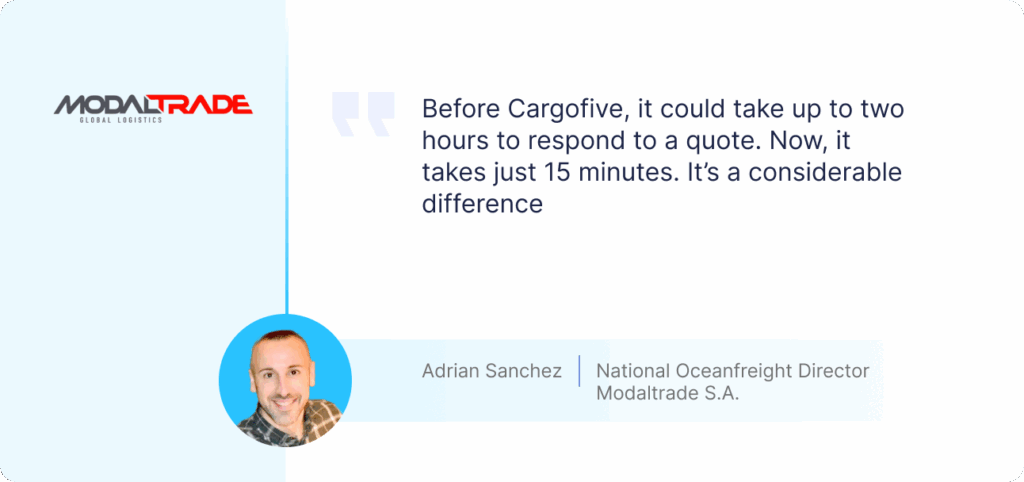
Getting Started Without the Tech Headaches
Questions to Ask Your Software Provider
You don’t need to understand how integration works technically, but you should know what to ask before choosing a platform. Here are the questions that actually matter:
Can I connect to my main carriers automatically? If you primarily use Maersk, MSC, and Hapag-Lloyd, make sure those connections are ready to go, not something you’ll need to build yourself.
How long does setup actually take? Be skeptical of “it depends” answers. Reputable providers should give you realistic timelines based on similar implementations.
What happens when something breaks? Systems fail. APIs change. Make sure there’s actual support, not just documentation you’re expected to figure out yourself.
Can my customers access their information directly? Customer portals shouldn’t be an expensive add-on. They should be built in.
What’s the real total cost? Watch out for hidden fees, per-transaction charges, or expensive “professional services” requirements that balloon your costs.
What Cargofive Makes Easy
At Cargofive, we built our platform specifically for freight forwarders who want the benefits of integration without the complexity. We’ve already done the heavy lifting of connecting to major carriers, customs systems, and shipping lines.
When you work with us, you’re not starting from scratch. The connections are already there. The customer portal is ready. The automated notifications are configured. You’re essentially plugging into an existing network instead of building your own from the ground up.
Our team handles the technical stuff so you can focus on what you do best: serving customers and growing your business. We speak your language—logistics, not programming—and our support team actually understands freight forwarding operations.
Red Flags to Watch Out For
Not all integration solutions are created equal. Watch out for these warning signs:
“Custom development required” – This usually means long timelines, high costs, and ongoing maintenance headaches. Look for platforms with pre-built connections instead.
Lack of carrier coverage – If they only connect to 2-3 carriers, you’ll still be doing manual work for the rest. Make sure they cover your key partners.
No clear pricing – “Contact us for pricing” often means expensive and negotiable. Transparent pricing indicates confidence in their value.
Poor reviews from actual forwarders – Don’t just trust marketing materials. Talk to other forwarders who actually use the platform daily.
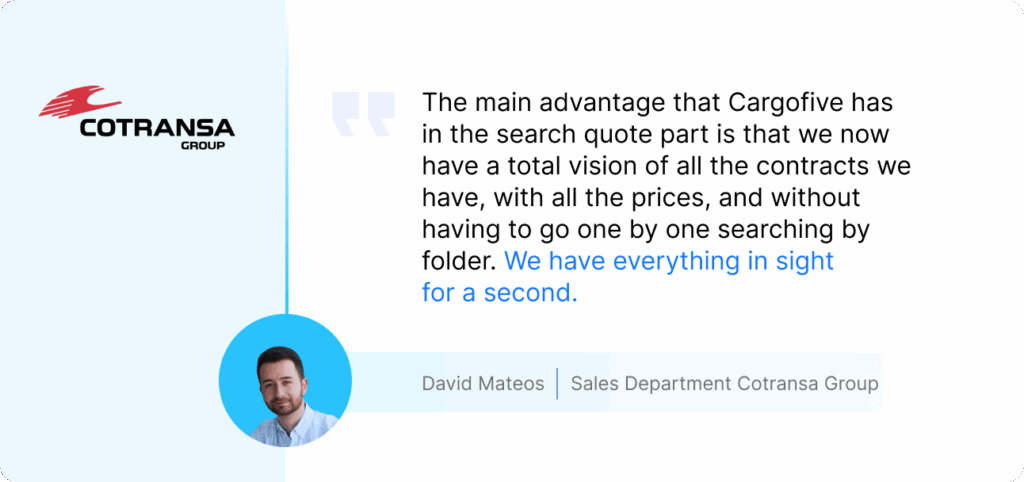
Real Results From Real Forwarders
Success Stories That Matter
Let me share what we’re seeing with Cargofive customers who’ve embraced integration:
A mid-sized forwarder in California was spending 15+ hours weekly just chasing carrier updates and sending customer emails. After integrating their systems, that dropped to under 2 hours. They reallocated that time to sales activities and landed three new major accounts in the next quarter.
A growing forwarder in Texas was hitting capacity limits with their 6-person team. Instead of hiring three more people, they implemented proper integration.
They now handle 60% more volume with the same team, and their margins actually improved because labor costs stayed flat while revenue grew.
A forwarder specializing in Asia imports reduced customer inquiry calls by 70% after giving customers direct portal access with real-time tracking.
Their staff morale improved dramatically because they stopped spending all day answering “where’s my shipment?” calls.
ROI You Can Actually Measure
The return on investment from proper integration shows up in concrete ways:
Time savings: 20-30 hours per week per person on average, valued at $2,000-4,000 monthly depending on labor costs.
Error reduction: 85-95% fewer data entry mistakes, eliminating costly corrections and service failures.
Customer retention: 15-25% improvement in customer retention rates due to better service.
Growth capacity: Ability to handle 2-3x more volume before needing additional headcount.
Most forwarders see full ROI within 3-6 months, then continue reaping benefits for years. It’s not an expense it’s an investment that pays for itself quickly.
The Future is Already Here
What Leading Forwarders Are Doing Now
The most successful freight forwarders aren’t waiting for integration to become “necessary.” They’re already using it to gain competitive advantages:
They’re offering instant rate quotes powered by real-time carrier pricing APIs. They’re providing customers with Amazon-like tracking experiences. They’re using automated exception management that flags potential problems before they become crises. They’re analyzing data across all shipments to identify optimization opportunities.
These aren’t massive corporations with IT departments. They’re forward-thinking forwarders of all sizes who realized that working smarter beats working harder.
Don’t Get Left Behind
Here’s the uncomfortable truth: API integration is becoming table stakes in freight forwarding, not a competitive advantage. In two years, customers will expect this level of service from everyone, just like they now expect email instead of fax machines.
The forwarders who integrate now are building sustainable competitive advantages. The ones who wait will find themselves playing catch-up while their competitors have already moved on to the next innovation.
You can either be the forwarder who leads with technology-enabled service, or the one scrambling to match what everyone else is already offering. Which sounds better?
Conclusion
API integration isn’t about technology for technology’s sake. It’s about running a more profitable, less stressful, and more competitive freight forwarding business. It’s about spending your time on activities that actually grow your company instead of routine tasks that could be automated.
The forwarders winning in today’s market aren’t working longer hours or hiring more people. They’re working smarter by letting technology handle the repetitive stuff while they focus on relationships, strategy, and growth.
At Cargofive, we’re committed to making integration accessible to freight forwarders of all sizes. You don’t need a technical background, a massive budget, or months of implementation time. You just need to decide that there’s a better way to run your business than drowning in manual processes.
The question isn’t whether to embrace integration it’s whether you’ll do it now while there’s still competitive advantage to gain, or later when you’re forced to just keep up. The smart money is on now.

Frequently Asked Questions
I’m not technical at all. Can I really implement API integration without hiring IT staff?
Absolutely. With the right platform partner like Cargofive, you don’t need technical expertise. We handle all the complicated parts—connecting to carriers, managing data flows, maintaining integrations. You just use the system like any other software. Think of it like using your smartphone: you don’t need to understand how it works to benefit from it. We’ve had successful implementations with forwarders who couldn’t define what an API is, and that’s perfectly fine.
What’s the realistic investment required to get started?
It varies by platform, but with Cargofive, most forwarders start for less than the cost of one full-time employee and they typically save multiples of that amount within months through efficiency gains. There’s no massive upfront investment or lengthy custom development. You’re essentially subscribing to a service that’s already built and ready to use. Compare that to the hidden costs you’re paying now: overtime hours, lost deals from slow responses, and customer churn from service issues.
How long before I actually see results?
Most Cargofive customers notice immediate benefits in their first week—particularly reduction in manual data entry and faster access to shipment information. Measurable ROI typically shows up within 60-90 days as efficiency gains compound and customer satisfaction improves. Unlike massive ERP implementations that take years, modern integration platforms deliver quick wins while you’re still learning the system.
What if my main carriers or partners don’t have APIs?
This is less of a problem than you might think. Most major carriers, shipping lines, and logistics service providers now offer API access—they may just not advertise it well. Platforms like Cargofive have already established these connections, so you benefit from our existing relationships. For partners without API capabilities, good integration platforms offer alternative connection methods like automated email parsing or file transfers, so you’re still not doing manual work.
Will this make my staff obsolete? I’m worried about my team’s reaction.
Integration doesn’t eliminate your team—it elevates them. Instead of spending their days on tedious data entry and routine inquiries, they focus on activities that actually require human judgment: building customer relationships, handling complex problems, and bringing in new business. Most teams love this change because it makes their jobs more interesting and valuable. Frame it to your staff as freeing them from boring work so they can do meaningful work, because that’s exactly what happens.
AUTHOR

